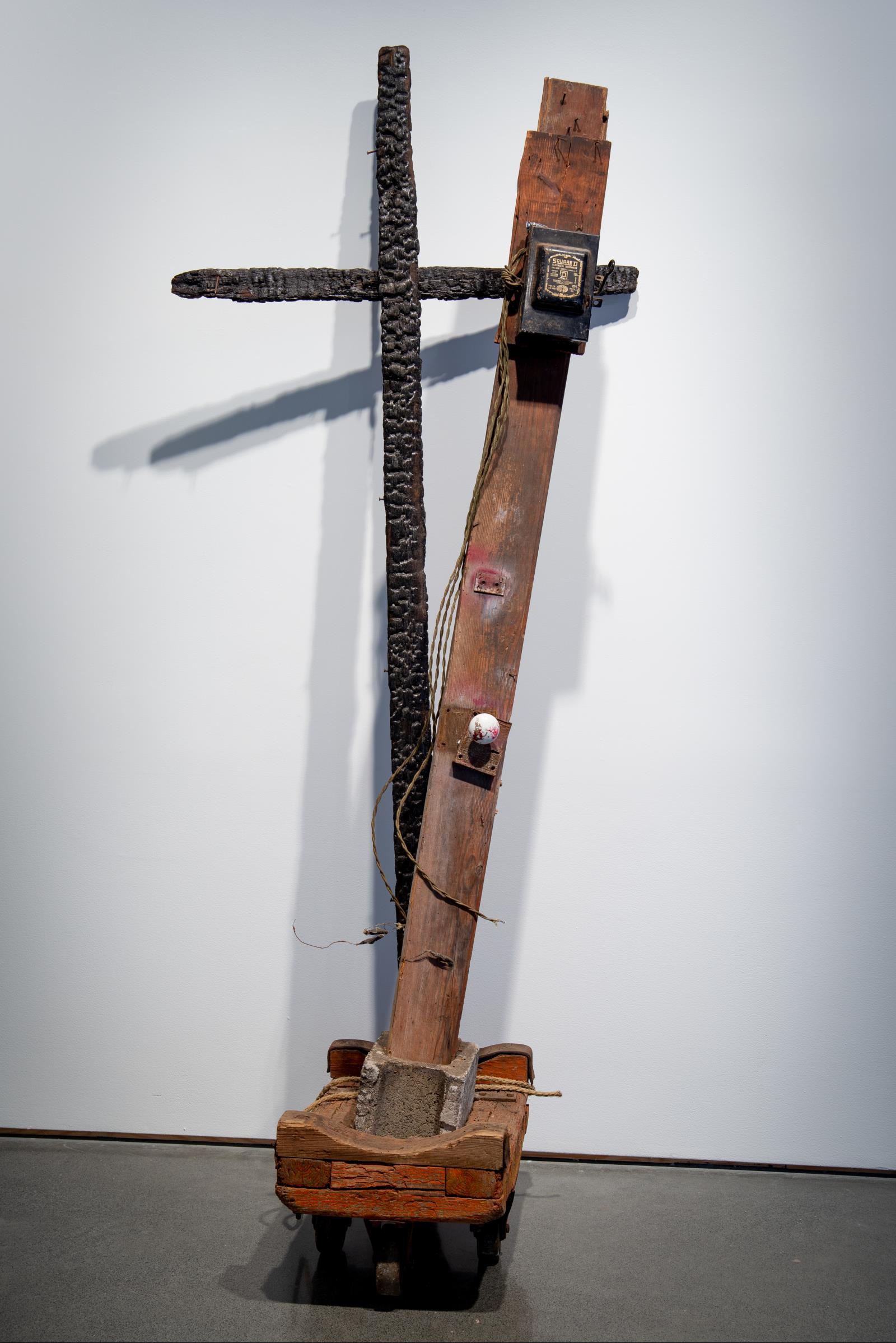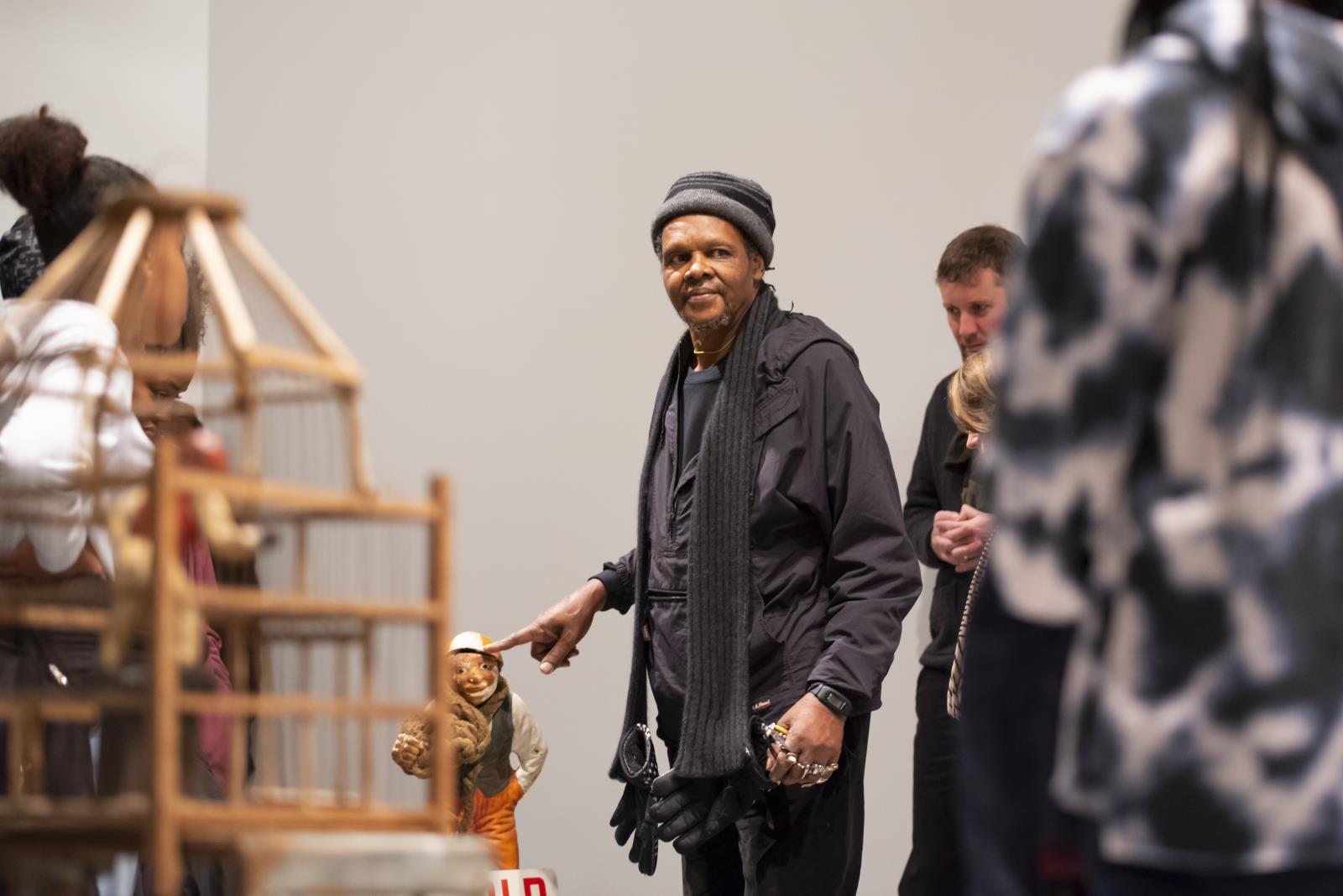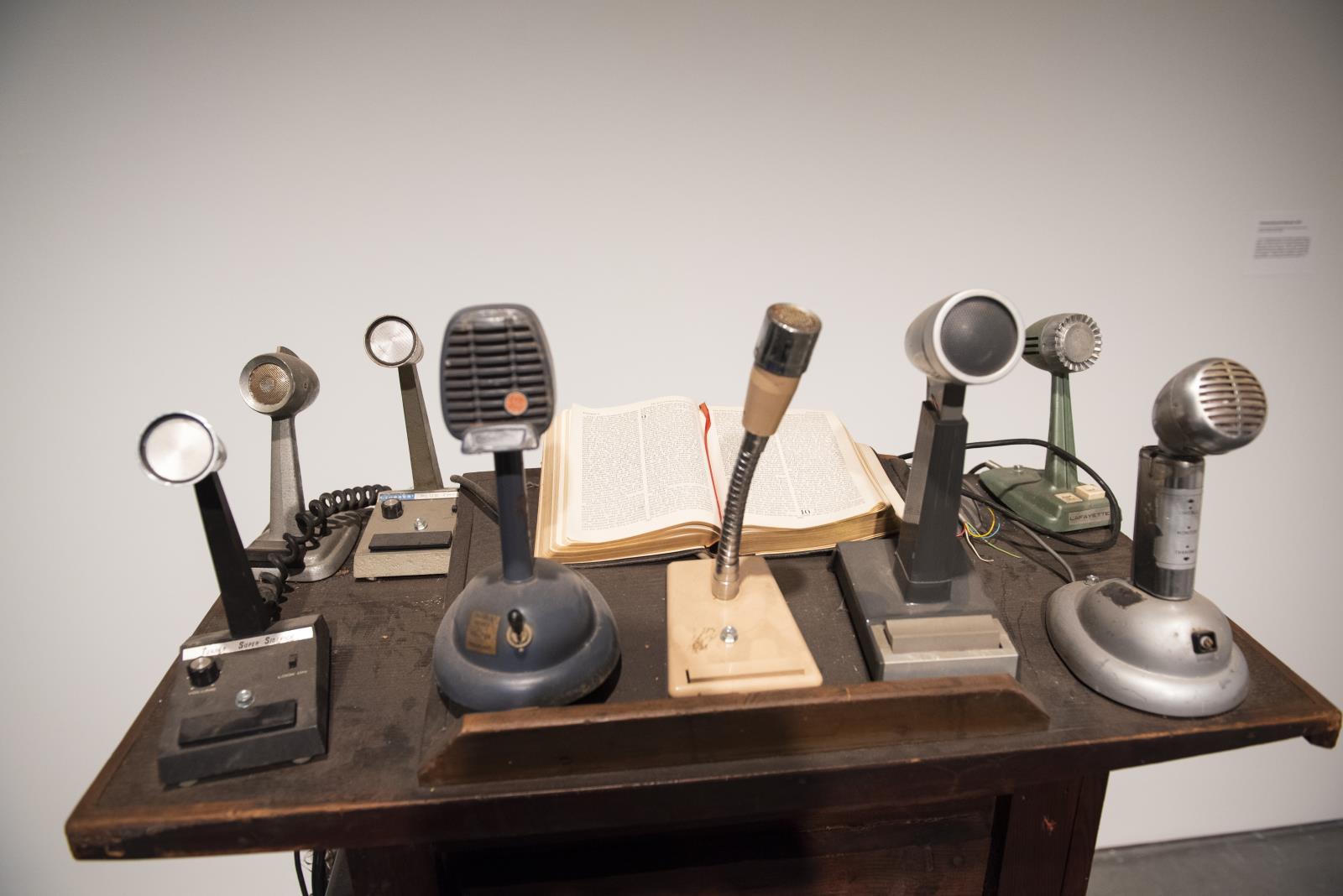Works by Lonnie Holley
On view through May 19
Lonnie Holley is an artist who defies genres. He works in multiple media, often simultaneously, bringing exuberant energy to his sculptures, paintings, prints, collages, music, and film. The artist was born in Birmingham, Alabama in 1950, deep in the Jim Crow era South working odd jobs starting at the age of 5. At 29 he began making his first works of art, often referencing his childhood experiences and relying on found objects. The first works were sculptures made from sandstone discarded from industrial foundries. Today he continues making works of art, built environments, film, and music.
Somewhere in a Dream I Got Lost presents just a small portion of the artist's output over the last five years. The materials he uses are things he finds in the world, presented honestly and imbued with many layers of meaning. The carefully selected objects in this gallery tell many stories, some that are personal to the artist and some that reflect universal experiences. His work expresses the shared history of black men and women in the American South while examining civil and human rights.
Curated by Wendy Earle, SECCA Curator of Contemporary Art
From the Artist
Found materials to me are required in the arts today, in order to help us through as a betterment of the human race. For what we call our Mothership.
I try to focus on the objects. Expressive habits in choosing materials for me has led me on a journey of some of our bases, problematics, aftermaths of our enjoyment of objects and no longer needing them because new ones (objects) are made accessible. We have a tendency to quickly rid ourselves of these materials without any further concern of their earthly existence. Therefore we think we're leaving them for other generations to do something about, but within seconds they can be thrown back up on us, in the manner and forms of our weather factors are sometime in our redevelopment and therefore they pose another problem of trying to hide them. We can't hide them only to a certain amount of time. Before we exactly take the time and do something about the problems.
You the viewer should find in my source of materials, revaluing concepts, from the oldest to the most fragile, to the materials that are swept back up on our water's edge.
– Lonnie Holley





